"Misdirected medical research, with gruesome and very exciting consequences, is the basis of the plot of The Scalpel, a photoplay produced by Richard H. Lyford, with the aid of a group of boys and girls of high school age. The plot is extravagant, the story is rather too filled with amazing action, and there is not a doubt that the melodrama as a whole puts too great a burden on the acting ability of a group of young people, even though they are surprisingly able. Nevertheless, here is an amateur made thriller of the Frankenstein and werwolf tradition that really sends chills chasing down your spine. The transition of the unfortunate doctor into a demented and abnormal creature involved makeup that is really astonishing outside of a theatrical studio. It can't be said that the handling of the episode is any less convincing in this amateur production than are the same undertakings in the best Hollywood films of this nature. In addition to being really successful in its object, this picture offers some excellent technical work and very competent management of a large cast." Movie Makers, Dec. 1936, 550-551.
"short abstract animation featuring visual rhythms created by the tempo and movement of circular, triangular, and square objects. Mori’s Senritsu was a black-and-white animation with synchronized music accompaniment, and Shimizu noted how the film attuned the visual images to the rhythm of the music, describing that “this kind of valuable experiment will inspire commercial talkies, more than Mickey Mouse and Silly Symphony do.” - Noriko Morisue, "Filming the Everyday: History, Theory, and Aesthetics of Amateur Cinema in Interwar and Wartime Japan" (Yale University: PhD Dissertation, 2020): 99.
A biographical documentary about the architect Sir Christopher Wren made as if Christopher Wren was discussing his own buildings.
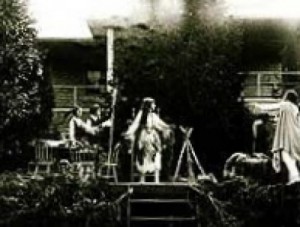
A theatrical-dance version of Snow White performed at the Blue Hill Country Club in coastal Maine.
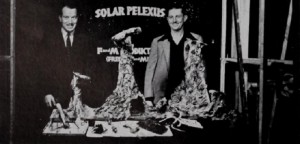
"Mel Weslander and Harry French of San Francisco, with 'Solar Pelexus,' were winners of Agfa's contribution of six rolls of film. As the misspelling of the title indicates, the subject was a farce portraying the journey of two men to another planet in a rocket." American Cinematographer, Jan. 1938, 28.
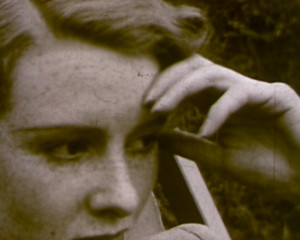
"Amateur filmmaker, cinema historian and railway engineer H.A.V. Bulleid employs an array of camera effects and trick photography techniques in this experimental short. Bulleid uses a mirror to distort a woman's reflection and a lens mask to conjure multiple images of her within the same frame, followed by a brief sequence showing how it was created. A ghosting effect uses double exposure to show the woman getting up from the chair but leaving her body behind. Bulleid also uses coloured filters and gauze diffusion to alter the look of his shots, and slow motion to change their visual impact. To display the versatility of interior shooting under normal lighting conditions, Bulleid uses orthochromatic film stock, before returning to exterior effects, using greased disc diffusion to create a dreamlike wash over the image. The film concludes with two sequences created using trick photography techniques including film reversal and split-screen shooting, and an example of step-zooming which gradually zeros in on the Big Ben clock tower at the Houses of Parliament in London." (EAFA Database)
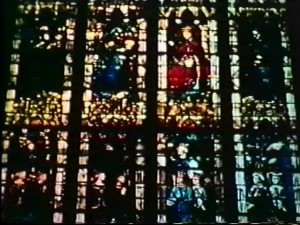
"Studies in Blue and Chartres Cathedral, a cerulean cinema achievement, one 400 foot reel in full Kodacolor by John V. Hansen, ACL, shows what an artist's and a colorist's eye can select and record. While this film is in some sense a travel record, Mr. Hansen definitely made it a point to choose those scenes and vistas that revealed the open sky, whether seen in patches through the interlaced branches of trees or as a dim, distance haze, shimmering up from the tops of far off mountains. Here are deep blue skies overhead, merging into white mist at the horizon, apple green, azure, so many hues that it is a revelation to see that a mechanical process can so beautifully record nature. Mr. Hansen presents to the audience's eyes such a varying kaleidoscope of blending colors in his continuity that it is difficult to do the entire effect justice by mere description. But among his outstanding technical achievements are the recording of sunlit glades in a dense forest, especially effective cloud and sunset shots, distant and close shots and side lighting and backlighting in profusion. A further, outstanding triumph in color technique was shown in Mr. Hansen's recording of the vivid, glowing hues of the stained glass windows, taken from the interior of the cathedral at Chartres. Here, he succeeded in capturing that peculiar, deep dyed transparency found only in the colors of old stained glass. It is questionable if any other method of reproducing color can give such a real and beautiful rendition of stained windows as the motion picture. Certainly no color printing process can compete. The film was rounded out by some charming long shots of the carefully cultivated, rolling hills of Denmark." Movie Makers, Dec. 1932, 538, 560.
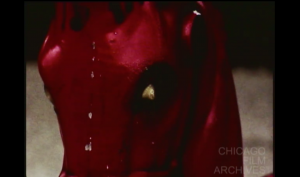
"Student film made at the School of the Art Institute of Chicago set to "Sugar Mountain," a song by Canadian folk rock singer and composer Neil Young." Chicago Film Archives
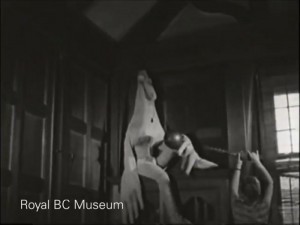
"Produced as a gift to Dorothy Burritt's husband, filmmaker Oscar Burritt (who was working in Toronto at the time), this is an offbeat study of life at their Vancouver apartment -- suite 2, 1960 Robson Street. The camera explores the apartment and the household memorabilia, and Dorothy is seen sitting for a portrait by painter Peter Bortkus. Later some friends drop by for a screening of Sacha Guitry's film Pearls of the Crown, followed by a party. Among the guests are Moira Armour, film editor Maureen Balfe, UBC student Stanley Fox, photographer Peter Varley, and an unnamed figure wearing a bird costume. Most of the people shown would have been involved with the National Film Society of Canada (Vancouver Branch). Suite Two won honourable mention (amateur category) at the first Canadian Film Awards in 1949." (BC Archives)
The film was restored in 1986 by the British Columbia Archives.
"Family scenes of playing in the garden at Westworth, Cockermouth. The children play in the garden with a trolley, an elderly couple walk in the grounds and the family pose for a group photograph." (NWFA Online Database)
Total Pages: 14